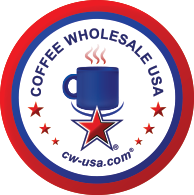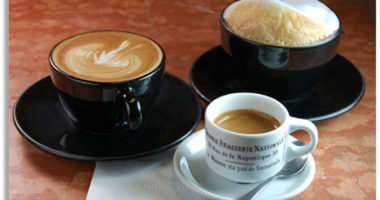
Before I became a self-proclaimed “coffee expert”, I knew that coffee that comes pre-ground in large blue containers smells great when you are getting out of bed in the morning. I knew that
Jamaica has really great coffee, called ‘Blue …’ something … because my mom told me about it when I visited the island in 7th grade. I also naively thought the best coffee came from Vietnam, before I realized it was the sweetened condensed milk that appeased my taste buds. I grew up a little bit and went off to college, where cafeteria coffee came in two types: ‘dark roast’ or ‘morning blend’. I decided then that my favorite type of coffee was ‘dark roast’ because I incorrectly assumed that dark roast was higher in caffeine. This assumption was about on par with the rest of my college logic. Example: vodka was preferable over beer because it contains more alcohol. At least the latter example wasn’t factually incorrect.
Now when I browse the shelves (or internet sites) for my coffee of choice, I look for genre first, then region, and lastly at the blend. Although we call ourselves “Coffee Wholesale – USA”, coffee cannot be produced in the contiguous United States (Hawaii is one of those non contiguous states) No, for coffee plants to survive and thrive, they need a few particular climate requirements.
There are two genres of coffee beans: arabica and robusta. Arabica beans necessitate one of the two types of growing conditions:
- In subtropical regions at high altitudes ranging from 3,600 degrees to 6,300 degrees. The subtropics run just above and below the tropical climate range (which is near the super-hot equator), falling above the Tropic of Cancer and below the Tropic of Capricorn by only 15 degrees longitude on either side before they hit the large temperate zone (includes most of the U.S.). These areas have well-defined wet and dry seasons. Mostly in South America.
- Mexico
- Jamaica (it’s Blue Mountain Coffee, by the way)
- Argentina
- Brazil
- Paraguay
- Hawaii (home of the exquisite and most sought after kona bean)
- Zimbabwe (in Africa)
- In VERY hot regions no more than 10 degrees above and below the equator. These areas have two rainy seasons which means there are two harvests in one year. Most of these regions lie in Africa, which is where the Arabica tree originated.
- Kenya
- Ethiopia
- Columbia
Robusta beans aren’t as picky and cheaper to produce. They thrive in tropical climates — 10 degrees north and south of the equator — at lower altitudes (from sea level to 3,000 feet). Coffee snobs usually scoff at the proposition of ingesting any beverage made from robusta. However, Italians traditionally use robusta blends in their espresso drinks. Coffee regions that produce examples include:
- Uganda
- Vietnam
- Brazil
- India
- Indonesia
How important is region when choosing coffee? Arabica and robusta are very different in flavor. However, some people can’t tell the difference. Training your palate to taste coffee takes practice, as it would to develop a nose for wine. Much less subtle but still important are the differences in flavors between countries. Wouldn’t it be fun to have a coffee-tasting party? Discover your preference and let us know, what is your favorite type of coffee? Does region influence your purchasing decisions?



